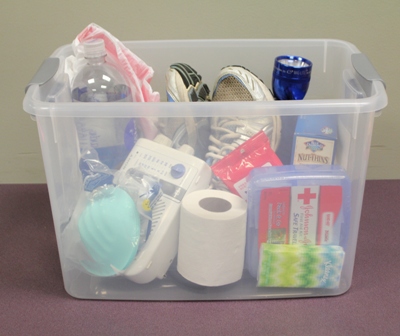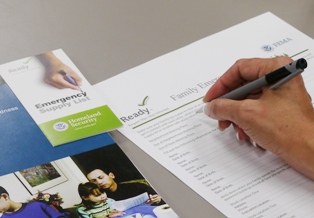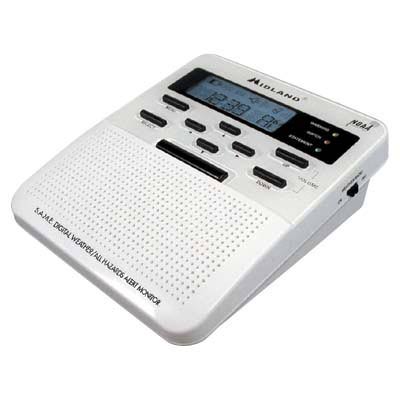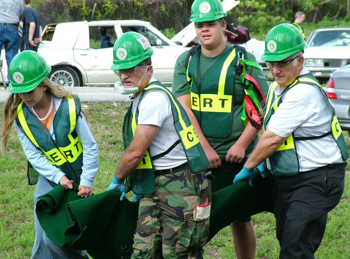September is National Preparedness Month
Every September the Department of Homeland Security and FEMA sponsor
National Preparedness Month across the U.S. . During the month, local governments, businesses and community organizations are encouraged to educate and engage with their people about how they can take three basic preparedness steps to become ready for any emergency.
 1. Create an Emergency Kit
1. Create an Emergency Kit
Families should also have at least one emergency kit in their home. At the bare minimum, this kit should include a three day supply of water and non-perishable food. The kit should also have a first aid kit, a flashlight, a battery-operated radio, a whistle, dust masks, plastic bags and toilet paper along with a wrench in case you have to turn your utilities off.
 2. Make an Emergency Plan
2. Make an Emergency Plan
First and foremost, families should take the short amount of time necessary to make an emergency plan. Where would you and your kids meet if a disaster struck and you weren’t all together? What if your cell phones didn’t work? Determining a pre-designated location to gather will lessen the panic.
 3. Be Informed
3. Be Informed
Most communities may be impacted by several types of hazards during a lifetime. Americans also travel more than ever before and people may be in areas impacted by hazards they are unfamilar with. Knowing what to do before, during and after an emergency is a critical part of being prepared and may make all the difference when seconds count.
 4. Get Involved
4. Get Involved
In the face of disaster, Americans come together with courage, compassion and unity and ask, “How can I help?” There are many ways to Get Involved, especially before a disaster occurs. The whole community can participate in programs and activities to make their families, homes and communities safer from risks and threats. Community leaders agree the formula for ensuring a safer homeland consists of volunteers, a trained and informed public and increased support of emergency response agencies during disasters.
Join the National Preparedness Month Coalition
Local governments, businesses and community organizations can use National Preparedness Month to host events, promote volunteer programs and share emergency preparedness information. To get started go to
www.Ready.gov NPM page and register to become a member of the NPM Coalition.
Once registered, members have access to a toolkit that includes suggestions for activities and events, templates, articles, banners and other customizable materials. The
www.Ready.gov website provides free emergency preparedness information and resources in English, Spanish and 12 other languages.
Each September, coalition members share preparedness information with their colleagues, customers, employees, and communities. For an inclusive list of volunteer opportunities in your communities, visit
www.serve.gov.
Emergency preparedness resources for seniors and people with disabilities.
Disasters and emergencies often put people at increased risk for safety and health – especially those who have disabilities or vulnerabilities. Always being prepared for emergencies can significantly reduce that risk and help ensure safety and well-being of people with disabilities during emergencies or unforeseen events. Even just a few minutes of planning and preparation with your family and friends now can make a world of difference later, if and when disaster strikes.

